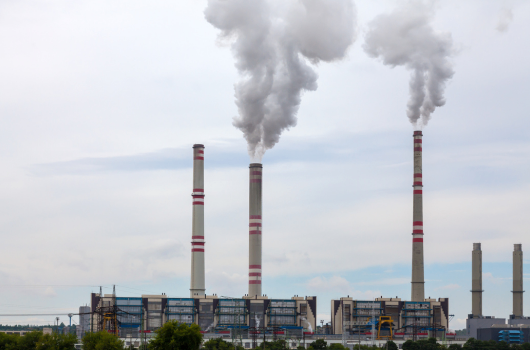Czech industry declined by 0.4% last year
Economic commentary by Jakub Seidler, Chief Economist of the CBA

Industrial production surprised positively in December, rising by a strong 2.8% month-on-month and the year-on-year decline eased from -2.7% in November to -0.7%, while the analysts' consensus had expected a decline of 3% (see Chart 1). However, December last year had 2 fewer working days than a year earlier and, excluding the aforementioned calendar effects, the year-on-year decline in the industry was 6% and closer to market expectations (-7%). December's month-on-month growth was driven mainly by the production of automobiles, machinery and computers. For the full year 2023, the industry fell by 0.4%, but if it had not been for double-digit growth in the automotive sector, it would have fallen by around 3%. Thus, a whole range of sectors experienced a noticeable decline last year. While the outlook for the industry is more optimistic for this year, with the consensus of economists expecting growth of around 2% for the time being, the start of the year has so far failed to deliver a turnaround, with the industry continuing to face a decline in production and new orders.
In December, the industry was again driven mainly by car production, which added a strong 10% month-on-month and accelerated from 2% to almost 12% year-on-year growth (Chart 2). The automotive industry thus traditionally had the highest contribution to year-on-year growth, at over 2 percentage points. Other transport equipment and computers also made a stronger contribution. However, the above figures are calendar-adjusted and these were relatively strong in December, as December 2023 had two fewer working days than a year earlier. In terms of the unadjusted numbers, the industry fell 6% year-on-year in December, and automobile production grew only 3% year-on-year versus 2% in November. The method of adjusting the data for calendar effects makes sense in order to take account of the length of the working month; however, in the case of large differences in the number of working days and in specific situations such as December, these figures need to be taken with a little more caution as they may introduce a slight bias into the figures.
New orders rose slightly year-on-year (Chart 3), but fell by 4% year-on-year without the effect of working days. For 2023 as a whole, they fell by 1.6%, with foreign ones falling by 3%. At the same time, this is the figure in current prices, unadjusted for inflation, and the real decline is more pronounced.
December brought a similar picture to that which the domestic industry experienced throughout last year, namely a solid development in the automotive sector, which largely offset the decline in other industries. For the full year 2023, the industry declined by 0.4%, Chart 4, (0.8% net of calendar effects), while in 2022 it grew by 2.5%. The industry was mostly driven by auto production, which grew by a strong 16% last year and contributed 2.7 percentage points to full-year growth. Without the impact of the automotive sector, the domestic industry would have fallen by 3% last year. The contributions of other sectors were much smaller, while most sectors ended in decline, with the decline driven most by electricity and gas generation and distribution (Chart 5).
The outlook for the domestic industry this year, according to the Focus Economics consensus, is so far favourable and the industry should grow by less than 2%, but everything will depend on the speed of recovery of foreign demand, which remains subdued at the beginning of the year. At the same time, it is likely that the domestic automotive industry will not see as positive a development as last year, as it was also driven by some one-off effects such as the completion of the 2022 backlog or the impact of a low comparative base due to production shortfalls. However, the automotive sector saved not only the industry but also the entire domestic economy from a noticeable decline, which would have fallen by more than 1% last year without its positive impact.
Industrial production (% yoy, calendar adjusted)
Source: CSO, CBA
Annual car production (% yoy, wda)
Source: CSO, CBA
Development of new industrial orders (% yoy, wda)totalforeign domestic
green: summary, blue: foreign, yellow: domestic
Source: CSO, CBA
Full-year industrial growth (% yoy, calendar-adjusted)
Source: CSO, CBA